Adding Data Systems
How to add a new Data System to your Organization.
Overview
This article provides instructions on adding a new Data System to your Organization. For more information on what Data Systems are and how to setup and use them, check out the following articles:
- To learn more about how Data Systems work, refer to this article: Data Mapping Overview
- For details on creating and managing Data System attributes, such as Relationship and Destinations, refer to this article: Managing Data System Attributes
Adding a New Data System
- Click on the Data Mapping drop-down menu and choose Systems.
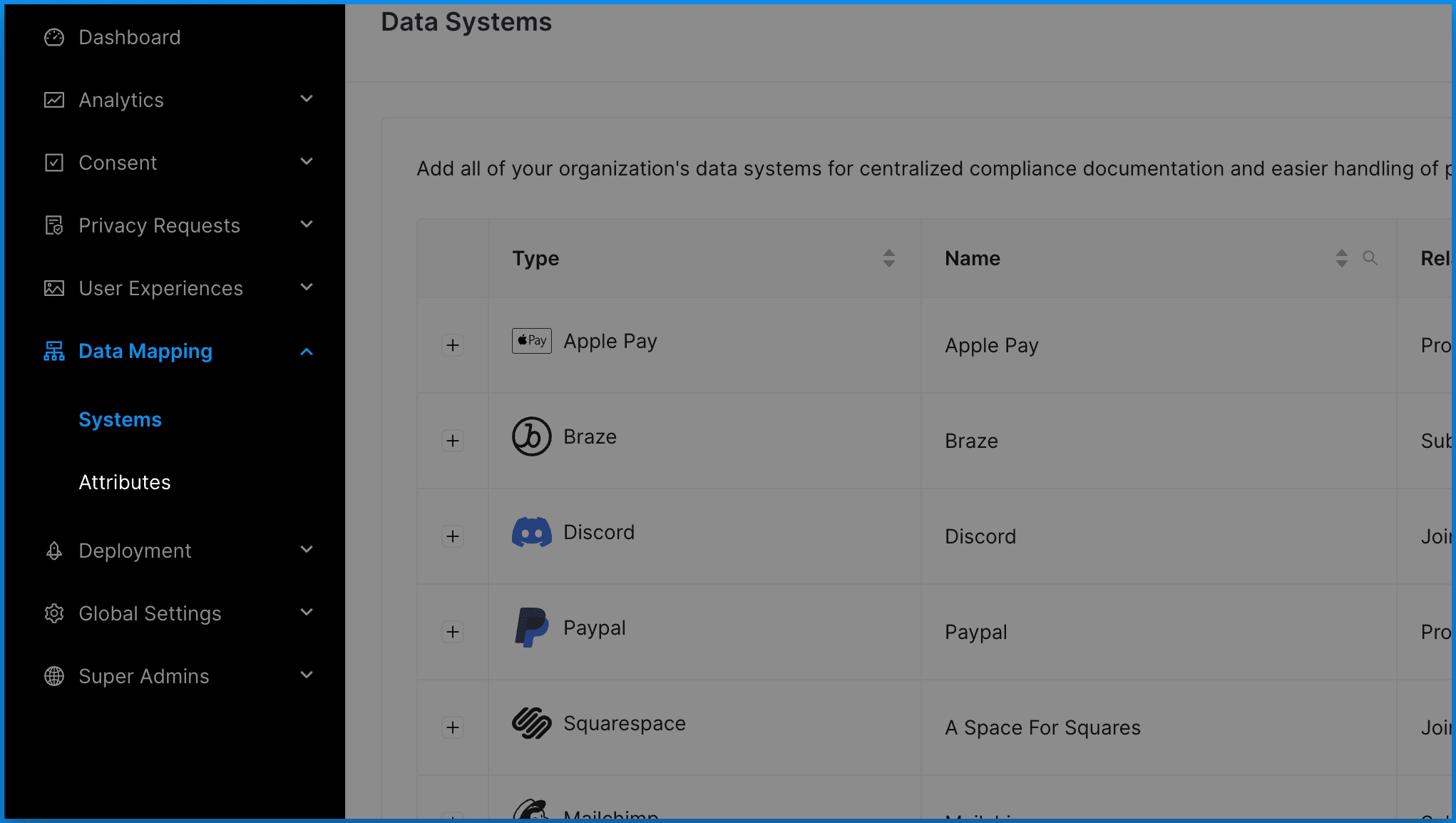
- Click Add Data System.
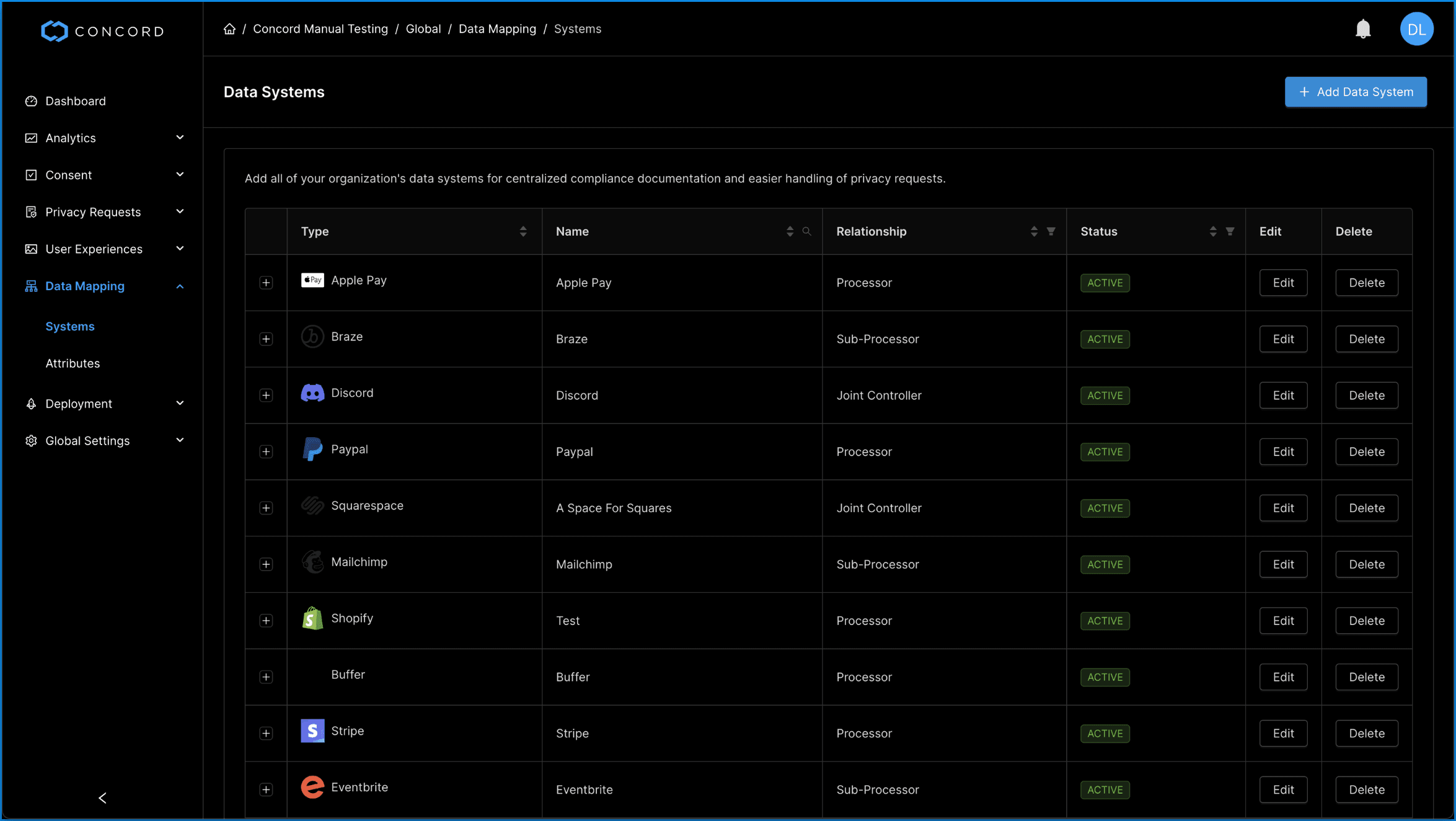
- Select the Data System Type and Click Next.
Begin typing to search for your Data System or scroll down to select from the system types that are available. For any types of data systems that aren’t yet supported, you can select Custom.
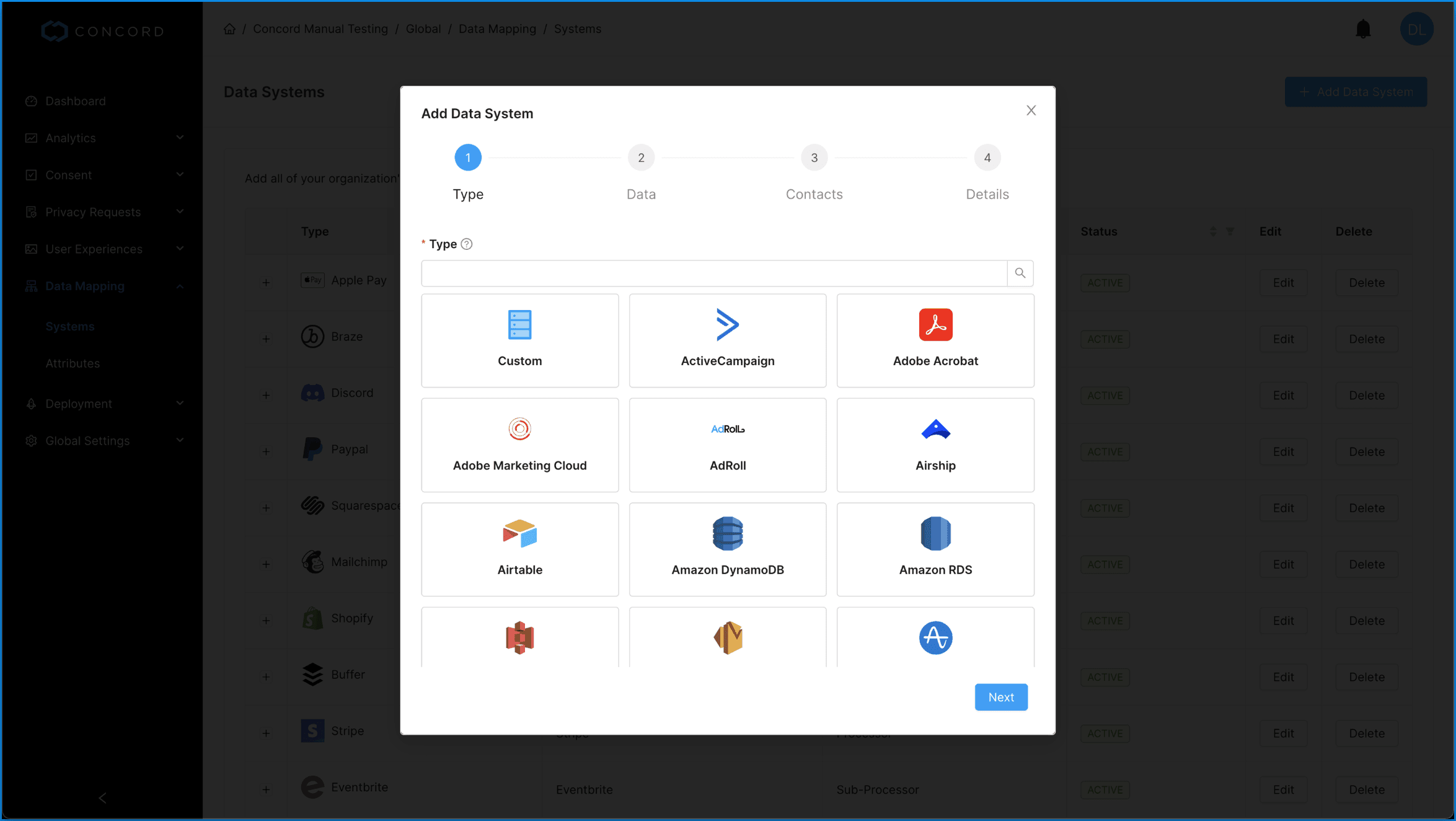
- Add the following Data System attributes (optional) and Click Next.
- Origins: Where does the data from the data system originates from.
- Destinations: Where the data is sent to and who the data is shared with.
- Processing Purposes: What the data in this system is used for.
- Processing Activities: The activities associated with the data in this system.
- Personal Data Categories: The types of personal data that are stored in the data system.
- Retention: This determines how long data is held in this particular system. The default retention is 12 months.
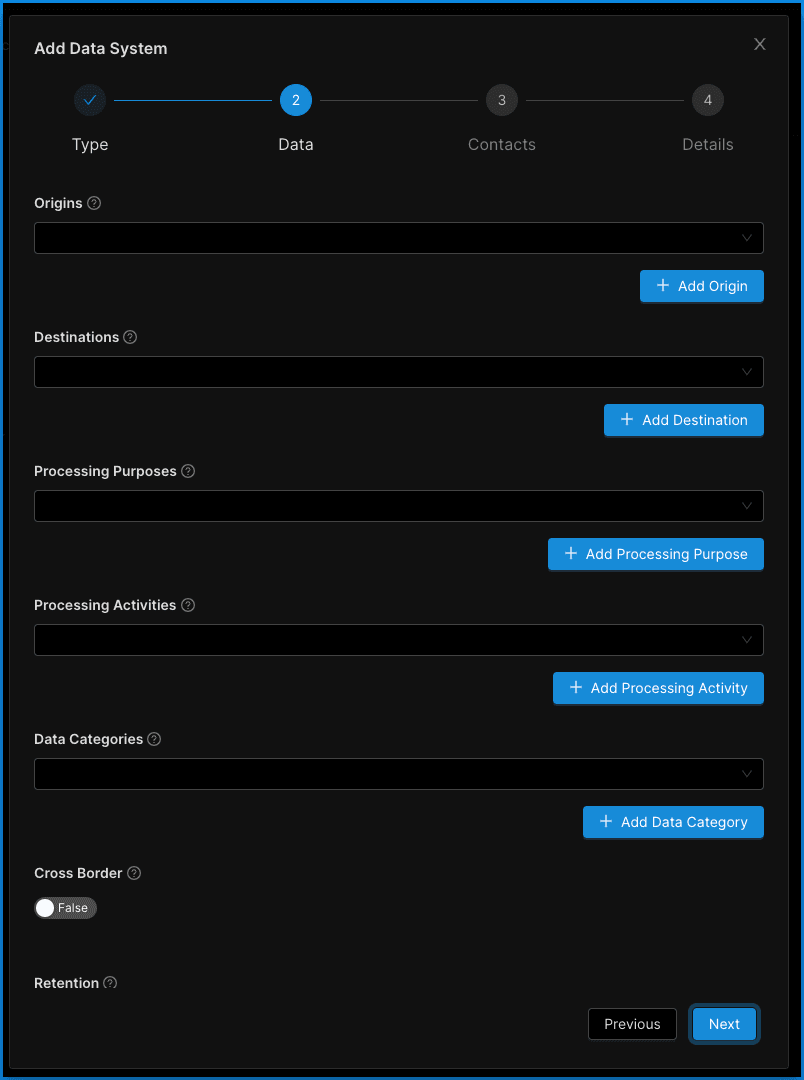
- Add the contacts at your company or other companies associated with this Data System (optional) and Click Next.
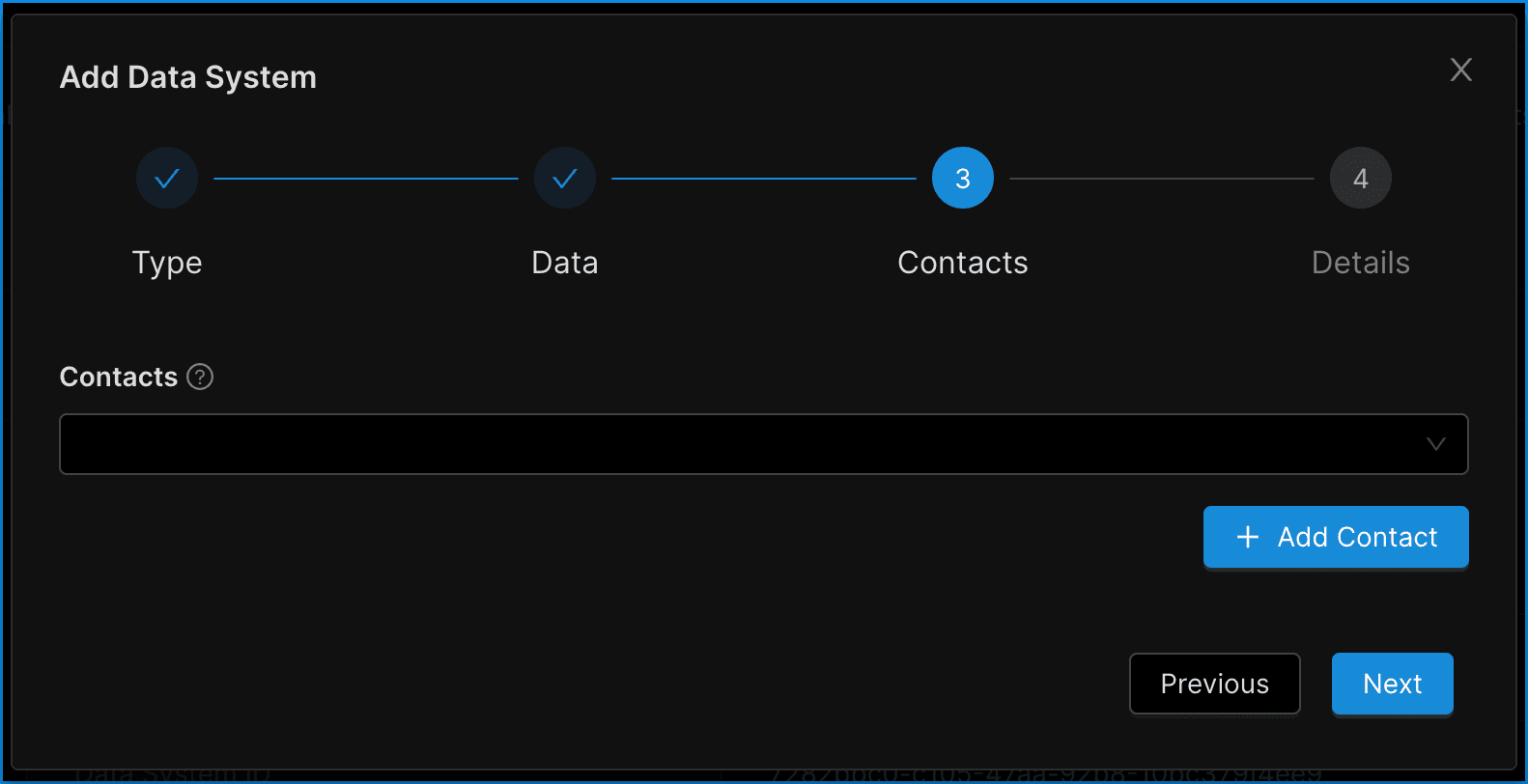
- Add the following details:
-
Name (required): The friendly name used to identify your data source in the Admin UI.
-
Relationship (optional): Relationship is for identifying the relationship of this data system in regards to your company. While you can add your own custom options as well, in most cases this will be set to one of the following predefined options:
-
Controller: Legal or natural person, an agency, a public authority, or any other body who, alone or when joined with others, determines the purposes of any personal data and the means of processing it.
-
Joint Controller: Third party data processor engaged by a Data Processor who has or will have access to or process personal data from a Data Controller.
-
Processor: Legal or a natural person, agency, public authority, or any other body who processes personal data on behalf of a data controller.
-
Sub-Processor: Two or more data controllers that jointly decide why and how to process personal data.
Note: Internally managed and maintained systems are usually a Controller. External systems, like SaaS products, are usually a Processor.
-
-
Security Measures (optional): The security measures that are in place to protect the data in this system.
-
Additional Notes (optional): Any additional details associated with this Data System.
 Click Done. The Data System has been successfully added to the list of active data systems.
Click Done. The Data System has been successfully added to the list of active data systems.